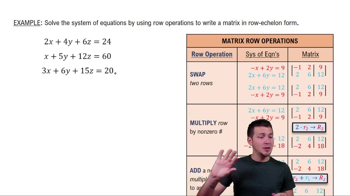7. Systems of Equations & Matrices
Introduction to Matrices
7. Systems of Equations & Matrices
Introduction to Matrices
Showing 6 of 6 videos
Additional 2 creators.
Learn with other creators
Showing 9 of 9 videos
Practice this topic
Showing 76 of 76 practice
















